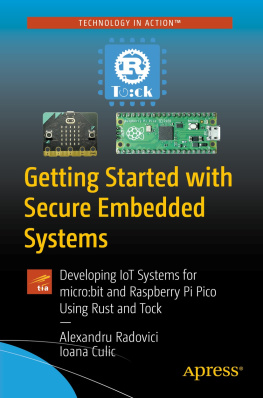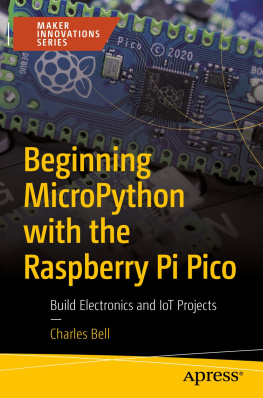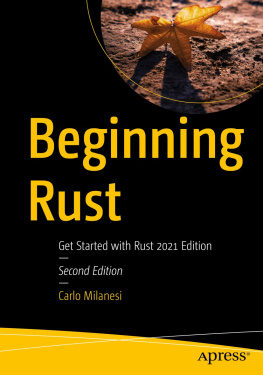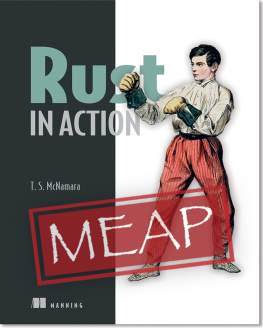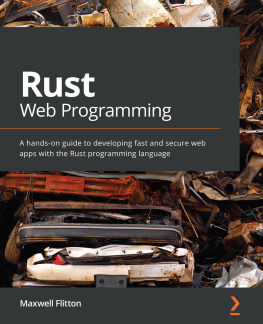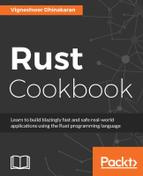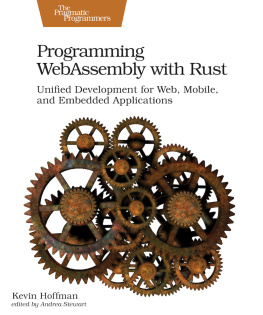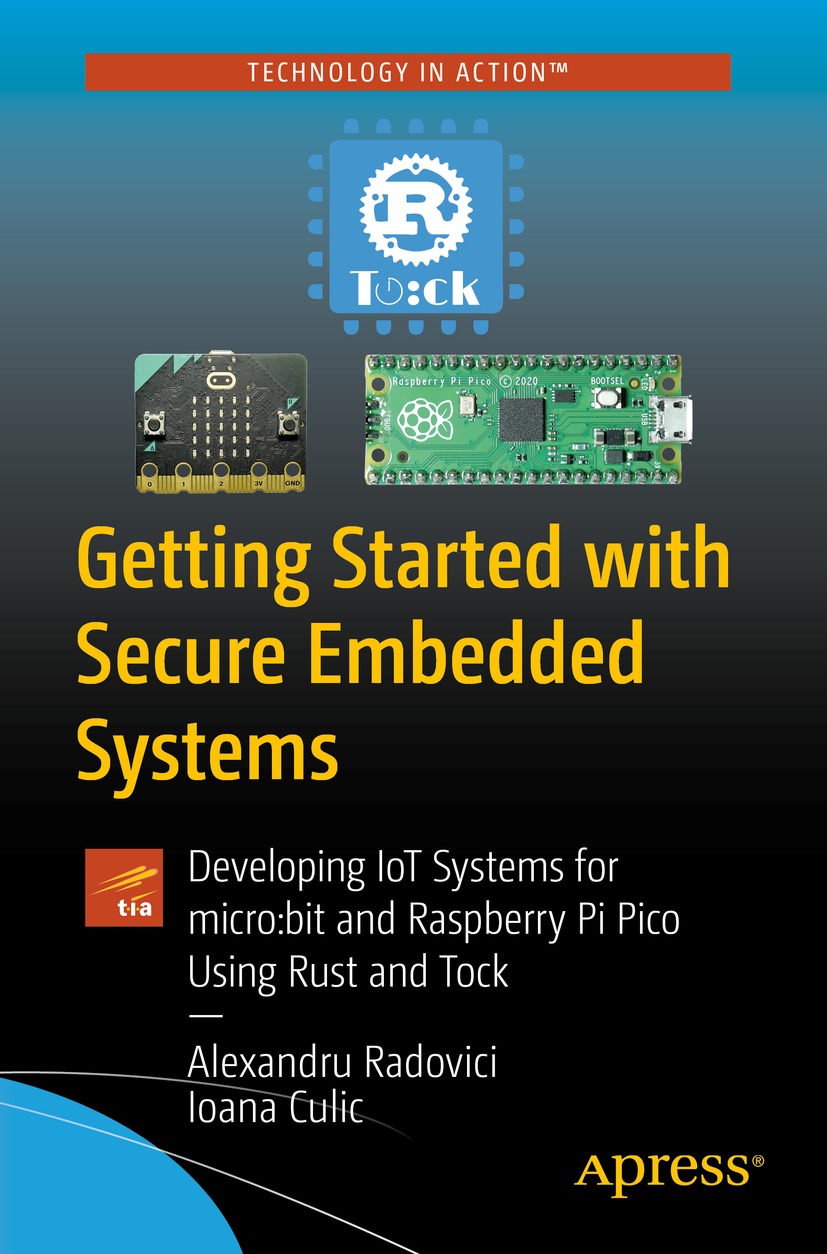Alexandru Radovici - Getting Started with Secure Embedded Systems: Developing IoT Systems for micro:bit and Raspberry Pi Pico Using Rust and Tock
Here you can read online Alexandru Radovici - Getting Started with Secure Embedded Systems: Developing IoT Systems for micro:bit and Raspberry Pi Pico Using Rust and Tock full text of the book (entire story) in english for free. Download pdf and epub, get meaning, cover and reviews about this ebook. year: 2022, publisher: Apress, genre: Computer. Description of the work, (preface) as well as reviews are available. Best literature library LitArk.com created for fans of good reading and offers a wide selection of genres:
Romance novel
Science fiction
Adventure
Detective
Science
History
Home and family
Prose
Art
Politics
Computer
Non-fiction
Religion
Business
Children
Humor
Choose a favorite category and find really read worthwhile books. Enjoy immersion in the world of imagination, feel the emotions of the characters or learn something new for yourself, make an fascinating discovery.
- Book:Getting Started with Secure Embedded Systems: Developing IoT Systems for micro:bit and Raspberry Pi Pico Using Rust and Tock
- Author:
- Publisher:Apress
- Genre:
- Year:2022
- Rating:3 / 5
- Favourites:Add to favourites
- Your mark:
Getting Started with Secure Embedded Systems: Developing IoT Systems for micro:bit and Raspberry Pi Pico Using Rust and Tock: summary, description and annotation
We offer to read an annotation, description, summary or preface (depends on what the author of the book "Getting Started with Secure Embedded Systems: Developing IoT Systems for micro:bit and Raspberry Pi Pico Using Rust and Tock" wrote himself). If you haven't found the necessary information about the book — write in the comments, we will try to find it.
Build secure and reliable IoT applications for micro:bit and Raspberry Pi Pico by using Rust and Tock.
One of the first Operating Systems written in Rust, Tock is designed to safely run multiple applications on low power devices, enabling you to build a secure foundation for IoT systems. It is an open-source OS that has recently gained popularity as companies such as Google[1] explore and integrate it into their products.
This book guides you through the steps necessary to customize and integrate Tock into your devices. First, youll explore the characteristics of Tock and how to run it on two of the most popular IoT platforms: micro:bit and Raspberry Pi Pico. Youll also take a look at Rust and how to use it for building secure applications with Tock.
The book focuses on the Tock kernel internals and presents the steps necessary to integrate new features. From simple drivers to the more complex asynchronous ones, you are provided with a detailed description of the Tock kernel API.
Next, youll review the Tock applications framework for C. Starting from simple Tock APIs to the more complex Inter-Process Communication system, this book provides a complete overview of the Tock application ecosystem.
By taking a practical approach, Getting Started with Secure Embedded Systems provides a starting point for building a secure IoT foundation using the Tock Operating System.
You will:
- Use Rust for embedded systems development
- Write applications and drivers for Tock
- Customize the Tock kernel for specific hardware platforms
- Set a solid base for building secure and reliable IoT applications Use Tock to ensure the security of your microcontrollers and integrate them into your projects
- Manage products that rely on Tock
Who This Book Is For
IoT system designers, developers, and integrators who are familiar with operating systems concepts. The book can also be suitable for people with less experience, who want to gain an overview of the latest hardware and software technologies related to building secure IoT systems.
Alexandru Radovici: author's other books
Who wrote Getting Started with Secure Embedded Systems: Developing IoT Systems for micro:bit and Raspberry Pi Pico Using Rust and Tock? Find out the surname, the name of the author of the book and a list of all author's works by series.

